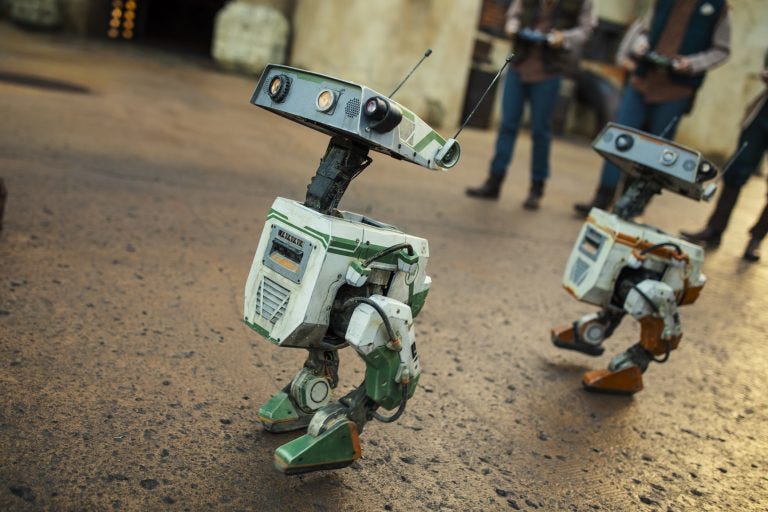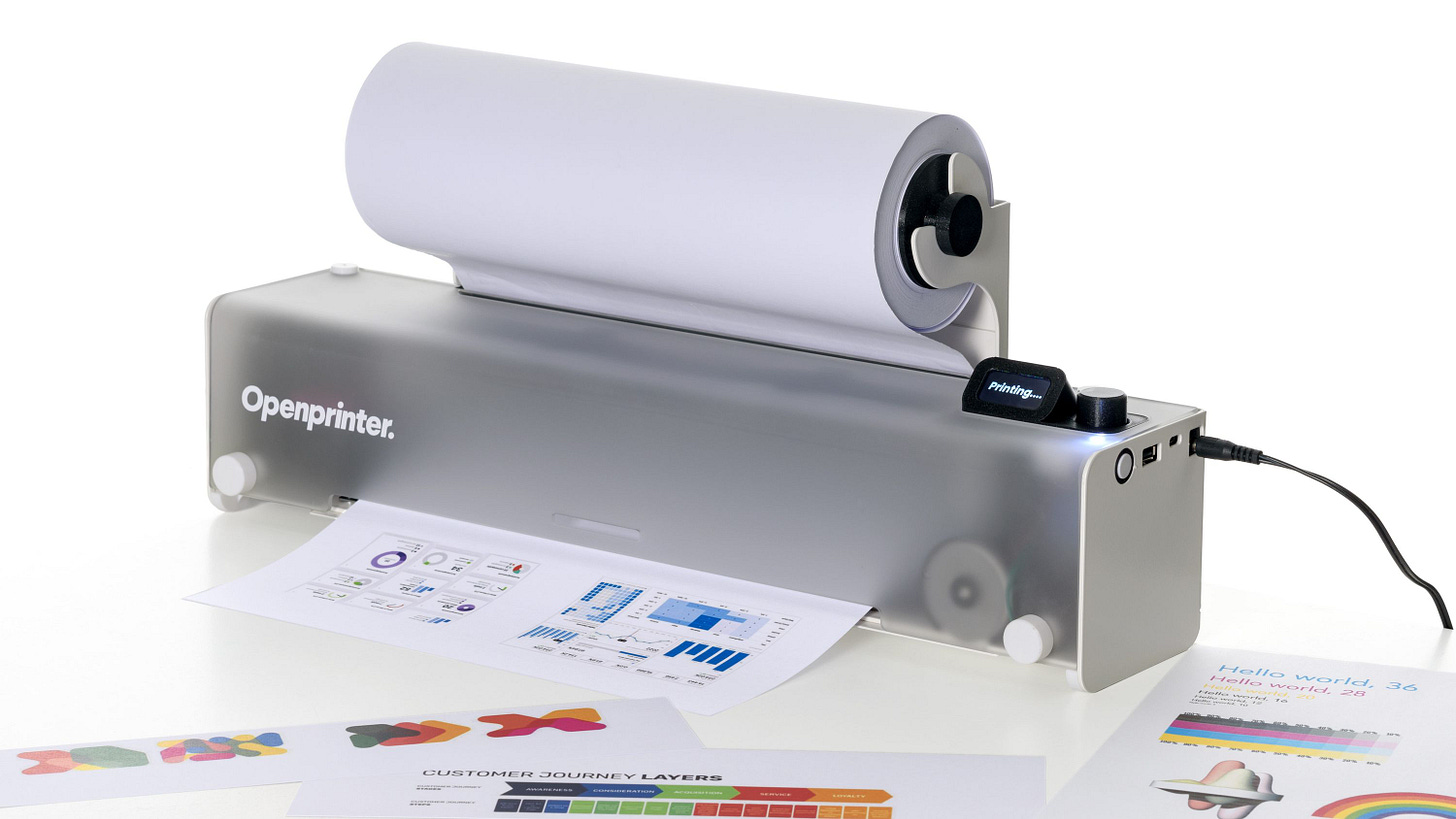Disney, DeepMind, and Nvidia open source Newton, a physics engine for robot R&D
Plus: Google’s new rules endanger F-Droid, Nvidia open sources facial animation tech, & more
Hi folks,
The headline this week is Newton, a GPU-accelerated physics engine for robotics R&D that Disney, DeepMind, and Nvidia are contributing to the Linux Foundation as an open source project.
Elsewhere, Google’s new developer verification rules have put the future of F-Droid and other community Android app stores in doubt, while Grab has open sourced a popular Figma plugin bridging workflows with Cursor. Nvidia also released its facial animation tech as open source, promising easier speech-to-avatar pipelines for game developers.
Plus more…
As usual, feel free to reach out to me with any questions, tips, or suggestions: forkable[at]pm.me.
Paul
Open issue
Newton lands in open robot learning
News emerged this week that Disney, DeepMind, and NVIDIA are contributing Newton — a GPU-accelerated physics engine — to the Linux Foundation.
Available under an Apache 2.0. license, Newton is designed for robotics R&D. It lets researchers run thousands of parallel simulations on GPUs, testing how robots might move, grasp, or navigate in virtual environments before deploying them in the real world.
Physics engines are already a fixture in robotics research, but Newton is pitched as a next step: high-performance, extensible, and built on Nvidia’s Warp framework. It integrates with tools such as MuJoCo and Nvidia’s Isaac Lab, and comes with simulation assets to support reproducible benchmarks across labs.
While the presence of Google’s DeepMind and NVIDIA is not entirely surprising for such a project, Disney’s role speaks to its less-publicized (but not insignificant) robotics research.
The trio announced back in March that they were collaborating on Newton, first unveiled at Nvidia’s GTC conference where Disney showed off its Star Wars-inspired BDX droids as an early use case. Nvidia confirmed at the time that an open source release would follow later in 2025.
As Moritz Bächer, director of Disney Research puts it, the company’s push to physically represent characters authentically in its parks has driven the development of advanced simulation tools. That work led to Kamino, a Newton-based simulator developed at Disney Research. It’s designed to manage the kinds of intricate, closed-loop robotic systems found in Disney’s parks, serving as a bridge between the company’s animation heritage and the demands of physical robotics.
“At Disney, we don’t leave a stone unturned to physically represent our beloved characters as authentically as possible in our parks,” Bächer said in a statement. “This has led to unique expertise in simulating highly complex robotic systems. Newton’s architecture has made it possible for us to create Kamino, a simulator that unlocks the potential of reinforcement learning for robotic systems of unmatched complexity.”
Looking ahead, the project is intended to evolve in collaboration with the wider robotics community, where the challenges of real-world deployment — from manipulation to navigation — remain a long-term horizon.
Read more: Linux Foundation / Newton on GitHub
Patch notes
Google’s new rules endanger F-Droid et al
Google plans to require all Android apps — including sideloaded ones — to be tied to verified developer accounts from 2026, a move it says is intended to curb malware and scams. For F-Droid, the open source app store (and alternative to Google Play), the move could prove existential. In a blog post this week, F-Droid board member Marc Prud’hommeaux said that it cannot require volunteer developers to register with Google, nor take control of their app identifiers to meet the policy.
These same rules would, of course, impact other community-led repositories, raising barriers for distributing free and open source Android apps outside Google’s ecosystem.
Read more: The Register / F-Droid
Nvidia open sources Audio2Face
Nvidia has released its Audio2Face technology — which generates facial animation from real-time speech — as open source.
The tool, part of Nvidia’s ACE avatar platform, maps intonation and phonemes to lip-sync and expressions, allowing developers to create more lifelike characters in games and 3D applications.
Read more: Nvidia developer blog
Grab open sources Cursor–Figma plugin
Grab, the company behind Southeast Asia’s dominant ride-hailing and delivery superapp, has open sourced a Figma plugin originally built to enable bi-directional text edits between Cursor and Figma.
As per a LinkedIn post from Grab technical program manager Karmi Nguyễn, the tool has already been adopted by more than 33,000 Figma users and forked hundreds of times, and now joins Grab’s open source collection as part of its Model Context Protocol (MCP) work.
Read more: LinkedIn post
Ruby community in turmoil
Long-time RubyGems maintainer Ellen Dash resigned after Ruby Central, the nonprofit that sponsors RubyGems and Bundler, revoked maintainer access and centralized control under its own staff. Ruby Central cited supply chain security and legal compliance, but critics described the move as a “hostile takeover” and warned it erodes community governance.
Read more: The Register
Microsoft launches Agent Framework
Microsoft this week introduced the Agent Framework, an open source toolkit for building agentic AI applications. The framework provides scaffolding for reasoning, memory, and tool use, aimed at standardizing how developers create and scale AI-driven agents.
Read more: Microsoft blog
And finally…
The prints and the paper! Open source inkjet seeks funding…
Printers are probably the most maligned gadget in modern computing — prone to jamming, refusing to connect, or deciding on a whim they don’t want to do what you tell them. And often, there isn’t a damn thing you can do about it.
Adding insult to injury, many models are locked down by cartridge DRM, a system where the printer verifies and blocks third-party or refilled ink cartridges. It’s a way for manufacturers to enforce their own consumables, even if it drives up cost and waste.
I, for one, can’t stand that kind of chicanery.
It doesn’t have to be that way though. A group of Paris-based tinkerers, including Léonard Hartmann and Nicolas Schurando, are crowdfunding Open Printer, an inkjet designed to be repairable, upgradeable, and free of cartridge DRM.
Built around a Raspberry Pi Zero W, Open Printer claims it can handle both sheets and roll paper, and uses refillable cartridges without vendor lock-in.
The project is still listed as “coming soon” on Crowd Supply, with no firm launch date or word on whether backers will be able to buy a kit or a fully assembled printer. For now, the promise is that the complete design — from schematics to firmware and bill of materials — will be published under a Creative Commons BY-NC-SA license. That’s not open source in the strictest sense, but it does mean builders and small manufacturers can pick it up, repair, and improve on it.
Even if the details are fuzzy, the idea of a DRM-free printer you can actually keep alive feels like a small rebellion against decades of inkjet misery.
Read more: NotebookCheck | Crowd Supply



